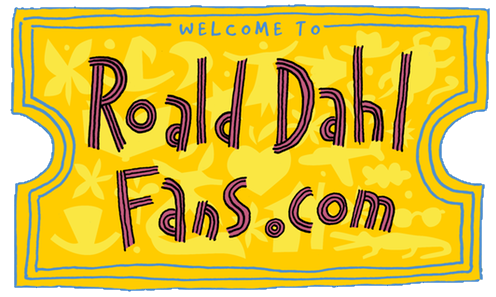This review was written by Candida Lycett Green and unpublished in an unidentified magazine. If you know what it was, please let me know!
“The entertainer”
Roald Dahl has been portrayed as both a monster and a hero. Candida Lycett Green reviews Jeremy Treglown’s account of the cantankerous writer’s tragic life.
That Roald Dahl was a great man is undeniable, but after reading Jeremy Treglown’s exemplary, elegant, unassumingly written Roald Dahl – A Biography (Faber & Faber, £17.50), I now realise he was a great man with brass knobs on. Dahl was one of the most successful ever writers of children’s fiction. The initial Chinese print-run of Charlie and the Chocolate Factory was 2 million copies. Between 1980 and 1990, over 11 million of his books were sold in Britain alone, and by the end of Dahl’s life, on average one in three British children bought or was given a book by him each year. Dahl is an all-powerful figure, and the journeys he takes us on, through plausible fantasies with pleasurable comeuppances, leave us ever hopeful that every dog will have his day. He makes us laugh and cry, and satisfyingly shocks the conformists.
Great men are not usually allowed to get away with it: Lewis Carroll was accused of interfering with little girls, Enid Blyton of racism and Dahl of anti-Semitism. Treglown has pulled the carpet from under the muckrakers’ feet by presenting the details without sensationalising them, and putting them in proportion with the rest of Dahl’s life. He had less than full cooperation from the family and no access to family letters. Piecing together disparate material, he has portrayed a Big Friendly Giant emerging through a miasma of capriciousness and wilful behaviour. If Kingsley Amis thought Dahl one of the most repellent people he ever met, it was his loss.
By the end of the book, I loved Dahl for his “sparkiness” (his words), his fierce fighting spirit, his unpredictability, his rows with a stream of publishers, his relentless patriotism, his ability to shock guests at conventional Buckinghamshire dinner parties, his gambling, his bouts of philanthropy, his vulnerability and the fact that he was extremely difficult to please. Even though he was said to look like Virginia Woolf in drag, he was irresistibly attractive to women and made conquests the length of America.
Doll was born of Norwegian parents in Cardiff, where his father was the prosperous co-owner of a ship-broking business. But from the age of four, Dahl’s life was wracked by tragedy. In 1920 one of his three sisters died of an appendicitis and two months later his father died of pneumonia. What was left of his family settled in Buckinghamshire (which his daughter Tess later nicknamed “Valley of the Dahls”).
As a fighter pilot during the war, Dahl was forced to crash land a plane which left him in varying degrees of pain for the rest of his life. He was then posted to Washington as an assistant air attaché, where his wit opened every door. He knew Richard Rogers, Eugene O’Neill and David Selznick, but his great friend and patron was Edward Marsh, a genuinely philanthropic millionaire whom Dahl loved. He also met there the young Hollywood star Patricia Neal, who had just ended a long affair with Gary Cooper and later became Dahl’s wife.
Everything went fairly swimmingly for awhile. But then the Dahls’ four-year-old son Theo suffered permanent brain damage when his pram was hit by a car in New York. Dahl learnt everything you could about the affliction. Having cross-questioned the neurological consultant Kenneth Till until he was blue in the face, he came up with the idea of creating an artificial brain valve to replace the malfunctioning one. He got in touch with an aircraft modelling acquaintance from the past, Stanley Wade, to make it, and the Wade-Dahl-Till Valve was launched. It was used to treat nearly 3000 children.
Within the next few years, Dahl’s seven-year-old daughter Olivia died from measles and, at the height of acting career, Neal was struck down by a multiple stroke, rendering her unable to talk, hairless, paralysed and facially contorted. Instead of buckling under, Dahl simply redoubled his efforts. For years he nursed and nurtured and supported his wife and four surviving children, being in effect a single parent as well as breadwinner. His collections of short stories, Someone Like You and Kiss Kiss, were rip-roaring successes, while the stories he had invented for his own children were beginning to take off. But the strain told. He left Neal and married Felicity Crosland. His books got better and better, as did his capacity for upsetting people. The latter, by my estimation and Treglown’s, is largely forgivable – what he has left for posterity outweighs all.
